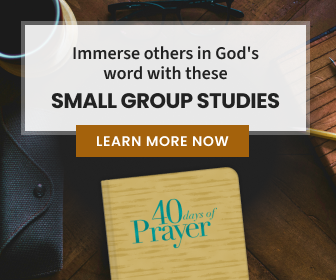Uncategorized
How to Assimilate People into Church Membership

Pastor, you may have a large crowd of attendees on Sunday morning – and still not have a congregation. The fact is that the crowd must become a church. They must be assimilated. Assimilation is simply the task of moving people from an awareness of your church to attendance at your church, and then to active membership in your church.
The community talks about “that church.” The crowd talks about “this church.” But the congregation talks about “our church.” Members have a sense of ownership. They are contributors, not just consumers.
What you’re battling, in this culture, is America’s rampant individualism. You rarely find “Lone Ranger” Christians in other countries. But America is full of “floating believers” – Christians who hop from one church to another without any identity, accountability, or commitment. They have not been taught that the Christian life involves more than just believing – it also includes belonging. We grow in Christ by being in relationship with other Christians.
Since the incorporation of new members into your church fellowship does not happen automatically, you have to develop a system and structure to assimilate and keep the people you reach.
Before people commit to joining your church, they want to know the answers to five unspoken questions:
- Do I belong here?
This is a question of acceptance. This question is best answered by establishing affinity groups within your church so that people with similar ages, interests, problems, or backgrounds can find and relate to each other. Everyone needs a niche, and small groups play a crucial role in meeting this need. You must show people that you have a place for them. - Does anyone want to know me?
This is the question of friendship. You can answer this question by creating opportunities for people to develop relationships within your congregation. There is an unlimited number of ways you can do this, but it takes planning. Remember, people are not looking for a friendly church as much as they are looking for friends. People deserve individual attention. - Am I needed?
This is the question of value. People want to make a contribution with their lives. They want their lives to count. They want to feel that they matter. When you can show people that they can make a difference with their gifts and talents by joining your church, they will want to be involved. Position your church as a creative place that needs the expression of all sorts of talents and abilities, not just singers, ushers, and Sunday school teachers. - What is the advantage of joining?
This is the question of benefit. You must be able to clearly and concisely explain the reasons and benefits of membership. Explain the biblical, practical, and personal reasons for membership. - What is required of members?
This is the question of expectations. You must be able to explain the responsibilities of membership as clearly as you state the benefits of it. People have a right to know what is expected of them before they join.
You need a way to address those unspoken questions and share the vision of your church. At Saddleback, the way we do this is through a required membership class, which we call CLASS 101.
In my opinion, the membership class is the most important class in your church. A strong membership class will build a strong congregation. A weak membership class will build a weak congregation. But keep in mind that a “strong” class doesn’t necessarily mean a “long” class. CLASS 101, at Saddleback, is only four hours long and is taught all on one day, but it produces a high level of commitment in our membership. Those who choose to join our church know exactly what will be expected of them as members. The strength of a membership class is determined by its content and call for commitment, not its length.
Some churches have a membership class, but they cover the wrong material in it. They fill the class with material on spiritual growth or basic doctrine. These subjects are vitally important, but they are more appropriately covered in your new believer’s class and Christian doctrine class – separate from your membership class. Your membership class should answer the following questions:
- What is a church?
- What are the purposes of the church?
- What are the benefits of being a member?
- What are the requirements for membership?
- What are the responsibilities of membership?
- What is the vision and strategy of this church?
- How is the church organized?
- How can I get involved in ministry?
- What do I do next now that I am a member?
Here are a few tips for your membership class:
- If your church targets the unchurched, you need to include a clear explanation of salvation in your membership class, because you will have many people who want to join your church who aren’t even believers yet! We always explain that trusting Christ is the first requirement for membership, and we have people saved in every membership class.
- Keep your membership class interesting and interactive by using video clips, a notebook with fill-in curriculum, small group interaction, and a good meal together. Be sure to include a lot of stories that personalize the history, values, and direction of your church. At Saddleback, we even include a quiz at the end of each class, testing the new members on how well they can state the purposes of our church and other important concepts.
- If possible, offer three versions of your membership class: a children’s version for older elementary kids, a youth version for junior high and high school, and the adult membership class.
- Make completion of your membership class a requirement for membership. People who are uninterested or unwilling to learn your church’s purposes, strategy, and the meaning of membership are failing to demonstrate the kind of commitment that membership implies. If they don’t even care enough to understand the responsibilities of membership, they cannot be expected to fulfill them after joining – and should not be allowed to join. There are plenty of other congregations to join that offer a meaningless membership.
Membership is an act of commitment. The way you motivate people to make that commitment is to show them value-for-value the benefits they will gain in return. When people understand and value membership, they will get excited about it – and what was once just a crowd will turn into a church.














